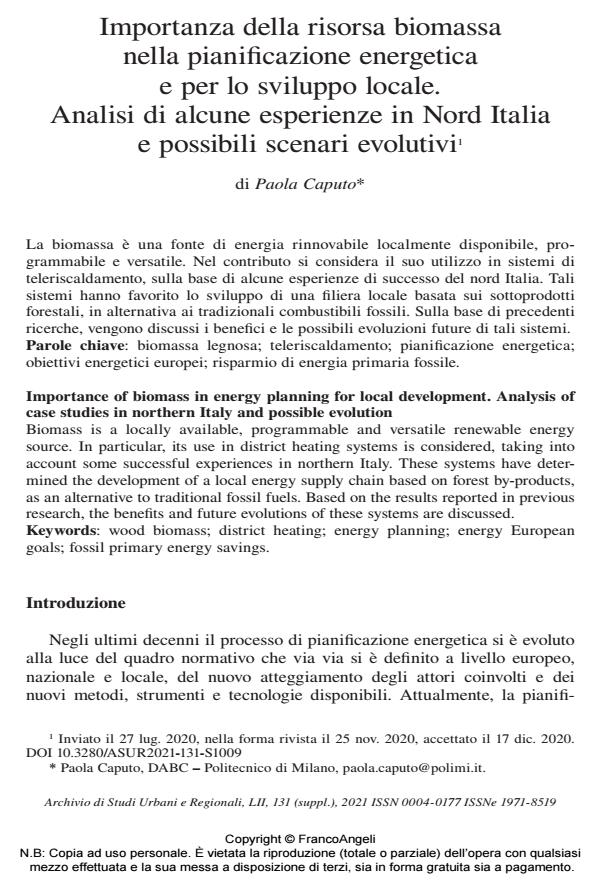Importanza della risorsa biomassa nella pianificazione energetica e per lo sviluppo locale. Analisi di alcune esperienze in Nord Italia e possibili scenari evolutivi
Titolo Rivista ARCHIVIO DI STUDI URBANI E REGIONALI
Autori/Curatori Paola Caputo
Anno di pubblicazione 2021 Fascicolo 2021/suppl. 131
Lingua Italiano Numero pagine 19 P. 186-204 Dimensione file 149 KB
DOI 10.3280/ASUR2021-131-S1009
Il DOI è il codice a barre della proprietà intellettuale: per saperne di più
clicca qui
Qui sotto puoi vedere in anteprima la prima pagina di questo articolo.
Se questo articolo ti interessa, lo puoi acquistare (e scaricare in formato pdf) seguendo le facili indicazioni per acquistare il download credit. Acquista Download Credits per scaricare questo Articolo in formato PDF

FrancoAngeli è membro della Publishers International Linking Association, Inc (PILA)associazione indipendente e non profit per facilitare (attraverso i servizi tecnologici implementati da CrossRef.org) l’accesso degli studiosi ai contenuti digitali nelle pubblicazioni professionali e scientifiche
La biomassa è una fonte di energia rinnovabile localmente disponibile, programmabile e versatile. Nel contributo si considera il suo utilizzo in sistemi di teleriscaldamento, sulla ba-se di alcune esperienze di successo del nord Italia. Tali sistemi hanno favorito lo sviluppo di una filiera locale basata sui sottoprodotti forestali, in alternativa ai tradizionali combu-stibili fossili. Sulla base di precedenti ricerche, vengono discussi i benefici e le possibili evo-luzioni future di tali sistemi.
Parole chiave:biomassa legnosa; teleriscaldamento; pianificazione energetica; obiettivi energetici europei; risparmio di energia primaria fossile.
Paola Caputo, Importanza della risorsa biomassa nella pianificazione energetica e per lo sviluppo locale. Analisi di alcune esperienze in Nord Italia e possibili scenari evolutivi in "ARCHIVIO DI STUDI URBANI E REGIONALI" suppl. 131/2021, pp 186-204, DOI: 10.3280/ASUR2021-131-S1009